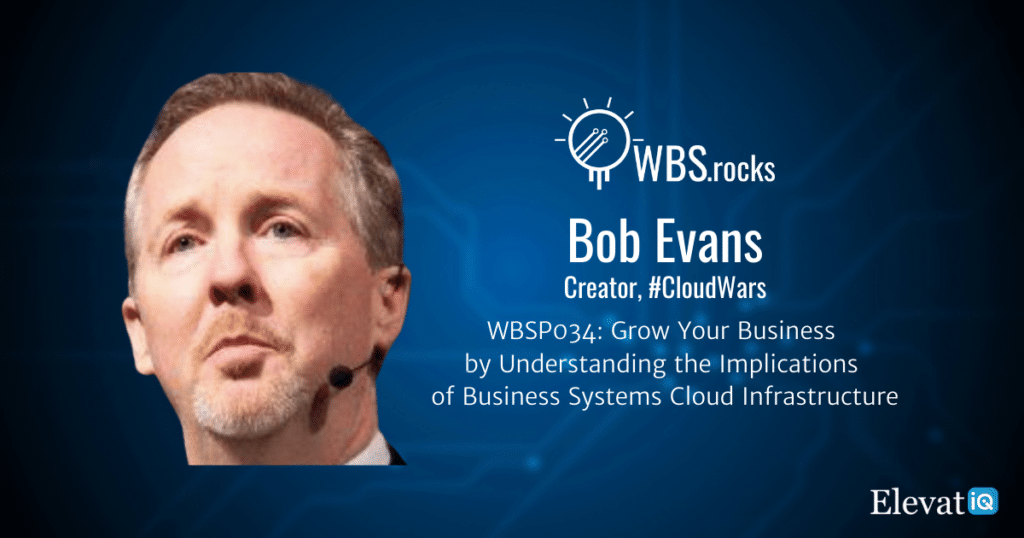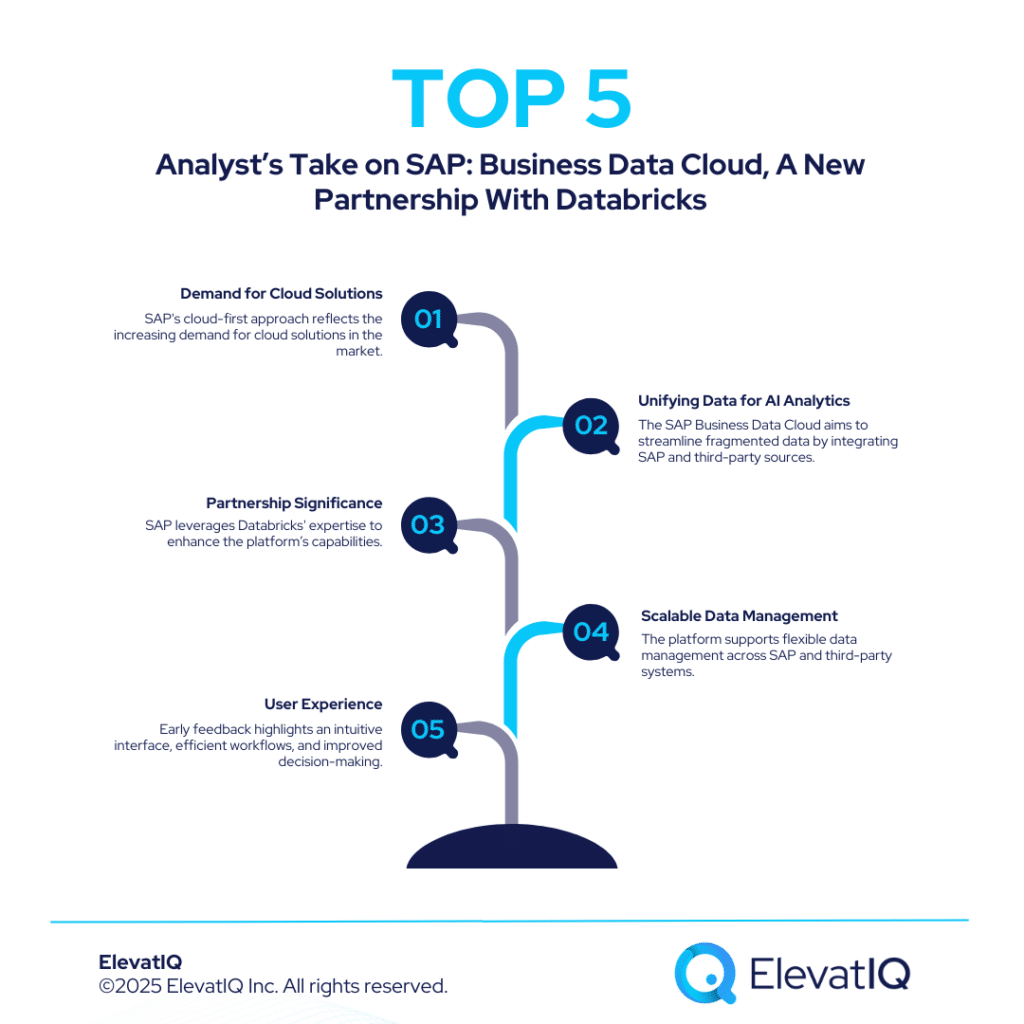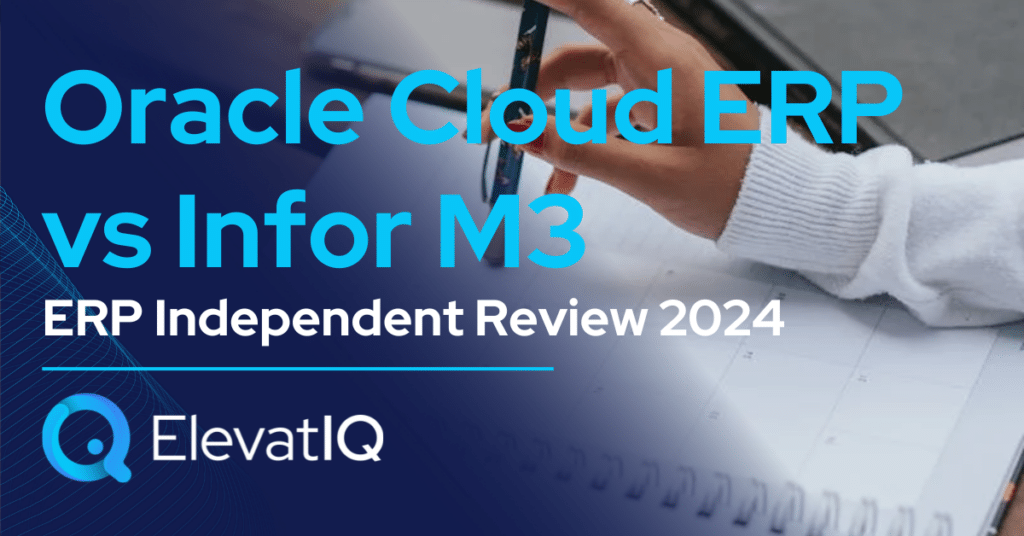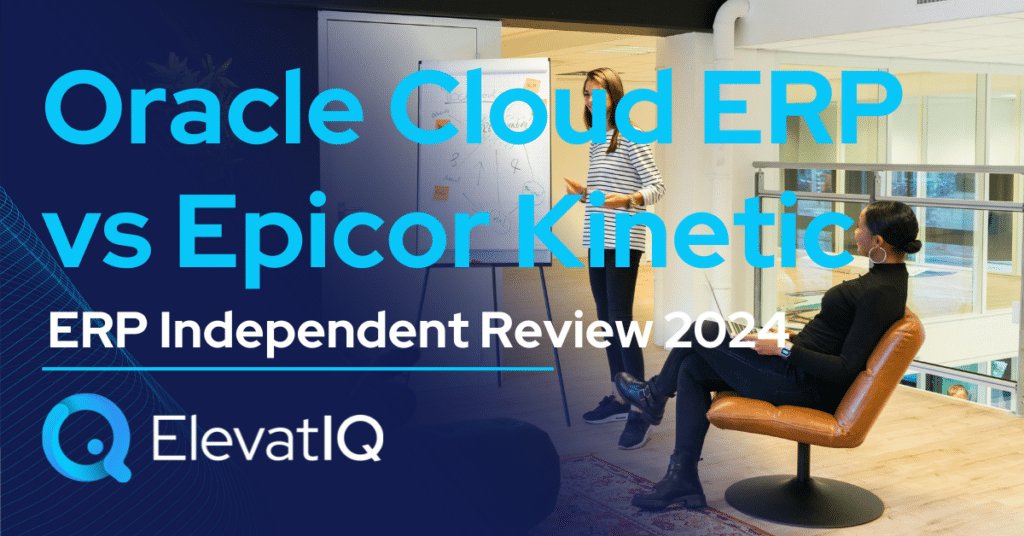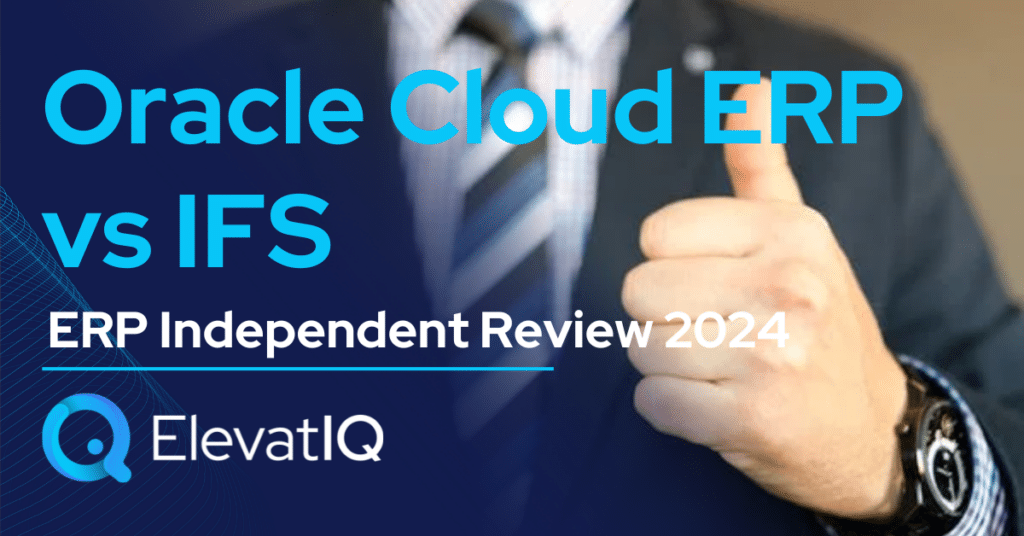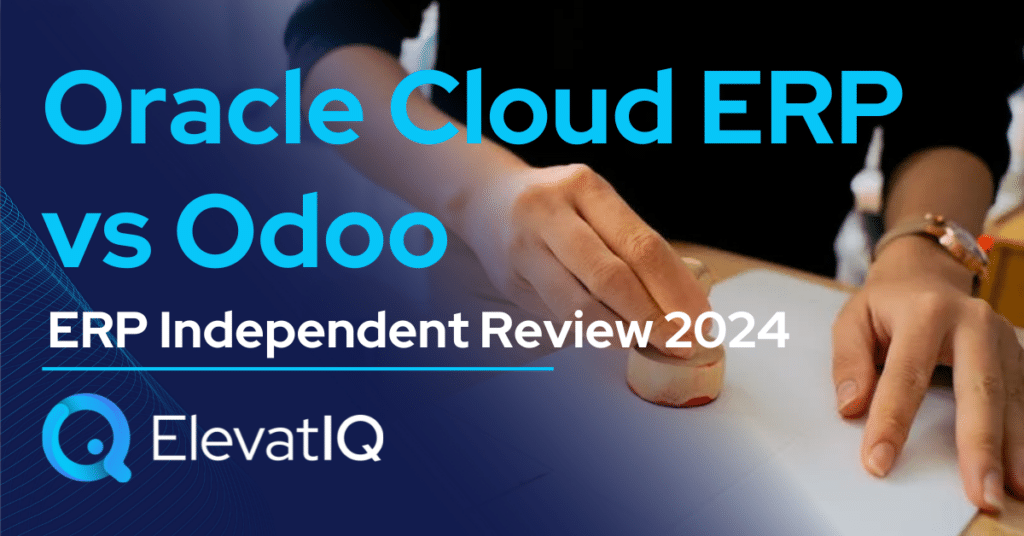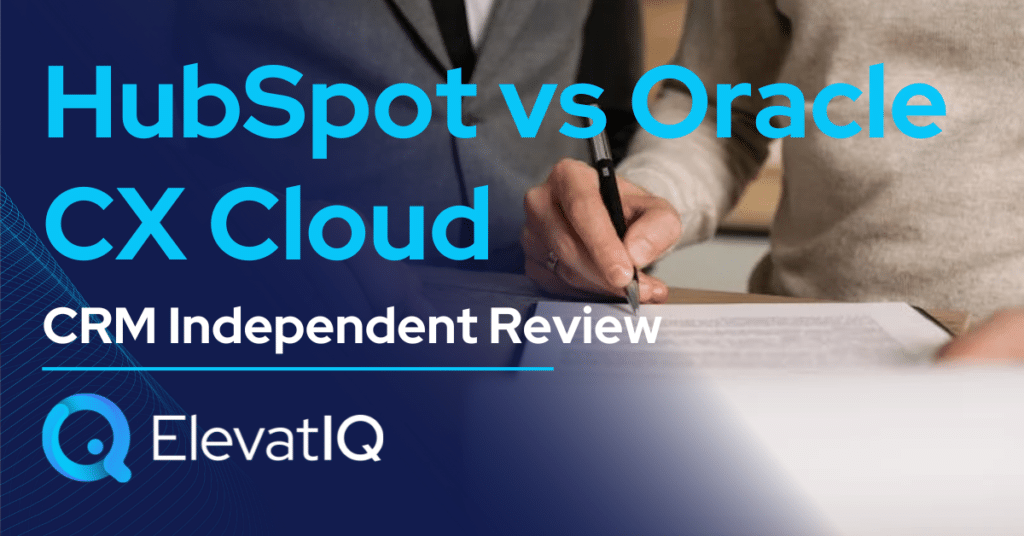Last Updated on November 27, 2023 by Sam Gupta
In this episode, we have our guest Bob Evans, who discusses what SMB customers need to know about cloud infrastructure providers. He also discusses the evolution of these vendors and their direction for the next 5-10 years. Finally, we touched on why understanding cloud infrastructure issues are still relevant and essential, even if the SAAS options may seem straightforward.
Chapter Markers
- [0:25] Intro
- [2:15] Personal journey and current focus
- [4:52] Perspective on growth
- [7:07] Macro positioning of major cloud vendors
- [12:50] The Infracture implications on cloud ERP
- [15:48] Cloud vendor-lock
- [21:45] Industry capabilities of cloud vendors
- [27:56] Tech prediction for CFOs
- [32:52] Closing thoughts
- [34:38] Outro
Key Takeaways
- Amazon has chosen to stick strongly in the infrastructure space. And they’ve also been built out into databases. I think they have 16 different specialized databases, which can be very useful.
- Microsoft has the infrastructure, they’ve added a database to that they’ve got the hybrid play that lets companies connect our older, traditional systems in with the new cloud possibilities. Plus they’ve got things that connect office and windows. And now they’ve got Microsoft Dynamics.
- What all the big tech companies are doing now is they’ve swung around, and they’re starting to develop industry-specific applications. And so everybody’s moving in this direction. And they are now applying these different tools that help businesses in those industries harness the power of data.

Subscribe and Review
Apple | Spotify | Stitcher | Google Podcasts | Deezer | Player FM | Castbox
About Bob
Bob Evans is one of the world’s leading analysts of the enterprise-tech phenomenon, the cloud industry, and the global phenomenon of digital transformation. He’s the creator of the Cloud Wars content network, a strategic advisor to CEOs and CMOs, and a keynote speaker. In 2012, he was recruited by Larry Ellison to become Oracle’s first chief communications officer, and he left there after 5 years to launch the two businesses he runs today: Cloud Wars Media LLC and Evans Strategic Communications LLC. He’s given keynote talks about business innovation, digital transformation, and customer-centric business on every continent on Earth (well, not Antarctica), and has written thousands of articles on those subjects.
Resources
Full Transcript
Bob Evans 0:00
You know what’s happened even before March of 2020. And since then, the adoption of the cloud has accelerated. It has given midsize and small businesses a platform and access to world-changing technology so that the smallest company in the world can have access to the same sort of remarkable technology that the biggest companies in the world have.
Intro 0:25
Growing a business requires a holistic approach that extends beyond sales and marketing. This approach needs alignment among people, processes, and technologies. So if you’re a business owner, operations, or finance leader looking to learn growth strategies from your peers and competitors, you’re tuned into the right podcast. Welcome to the WBS podcast, where scalable growth using business systems is our number one priority. Now, here is your host, Sam Gupta.
Sam Gupta 1:02
Hey everyone, welcome back to another episode of The WBS podcast. I’m Sam Gupta, your host, and principal consultant at a digital transformation consulting firm, ElevatIQ. While Software as a Service has made buying and implementing enterprise software such as ERP easier, evaluating SAAS options is never easy. With so much at stake with growth, understanding the implications of a cloud infrastructure provider is essential. You will have tons of questions such as security, the location of your data, and vendor lock-up issues. Finding the answers to such questions is hard unless you understand the cloud providers at the macro level.
In today’s episode, we have our guest, Bob Evans, who discusses what SMB customers need to know about cloud infrastructure providers. He also discusses the evolution of these vendors and their direction for the next five to 10 years. Finally, we discussed why understanding cloud infrastructure issues are still relevant and essential, even if the SAAS options may seem straightforward. Let me introduce Bob to you.
Sam Gupta 2:15
Bob Evans is one of the world’s leading analysts of the enterprise stack phenomenon, the cloud industry, and the global phenomenon of digital transformation. He’s the creator of the Cloud Wars content network, a strategic adviser to CEOs and CMOS, and the keynote speaker in 2012. He was recruited by Larry Ellison to become Oracle’s first chief communications officer. And he left there after five years to launch the two businesses he runs today, Cloud Wars Media LLC and Evans Strategic Communications LLC. He has given keynote talks about business innovation, digital transformation, and customer-centric business on every continent on Earth (well, not Antarctica), and he has written 1000s of articles on those subjects. With that, let’s get to the conversation. Hey, Bob, welcome to the show. Sam.
Bob Evans 3:13
It’s great to be here. Thank you so much for having me on.
Sam Gupta 3:15
Of course, just to kick things off. Do you want to start with your personal story and your current focus?
Bob Evans 3:21
Sure, Sam, you know, I have been in around the tech business for a long time. I was first involved with it from the media side. So I worked in magazines and some websites covering the tech industry from a business perspective. And Sam, it’s very easy to see if anybody talks to me for more than 10 seconds that I’m not a technologist. But I’ve always been fascinated by the business value and the business innovation that technology can help drive. So I really enjoyed that time in the media, but probably about 10 to 12 years ago, Sam, I decided I wanted to get out of the media business and into the technology business. So I worked for a year at SAP, where I helped them talk to the world more about the customer success that was happening, more about customer innovation, and so on. And then, I was recruited by Oracle.
Bob Evans 4:11
So I went over there, and I worked for Larry Ellison. For a while, I was their first chief customer officer. And then, after about five years there, Sam, I thought, I’m not getting any younger. So if I want to live out this dream to start a couple of companies on my own, now’s the time to do it. So I started a consulting business about four years ago that’s still doing well. But two years ago, I started Cloud Wars media, which allows me to cover, analyze, dig into and really try to understand how these big world-changing tech companies are aligning themselves with what business people need today. So not so much about the tech, but more about the business innovation that can help drive for customers.
Sam Gupta 4:52
Yeah, so I’m actually gonna dig deeper into all of that because my customers may not be directly affected by that, but they definitely need to know about the positioning of these different vendors. But before we do that, we have a standard question that we ask all of our guests. And that is going to be Bob, your perspective on growth. When you think of the word business growth, what does it mean to you?
Bob Evans 5:15
I am certainly concerned about it myself, right? You know, I have two relatively small businesses and entrepreneurs. So I want to see it happen. And I think, Sam, right, it is so much today, we hear so much about these big tech companies. And you look at these trillion-dollar valuations for some of these giant companies. It seems almost like, well, that’s just for the big, big folks. But you looked around with what’s happened even before March of 2020. And then since then, the adoption of the cloud, forget the technology side of it, has given midsize and small businesses a platform and access to world-changing technology so that the smallest company in the world can have access to the same sort of remarkable technology that the biggest companies in the world have. So I think all of that is a huge factor for growth.
Bob Evans 6:06
And the other thing, Sam, that I think is so critical about growth these days, for the excellent audience you’ve got up on your show is, yeah, that it’s the mindset of leaders these days, in companies about growth, right, they’ve got to be able to take their past, and all the wonderful things they’ve done in the past. And then almost like a deck of cards, they’ve got to shuffle that and come up with a different way of playing for the future, right, with customers and prospects calling more the shots about what happened, how quickly can these companies adapt to new opportunities match the engagement methods, and preferences of their customers understand new ways to apply some of these exciting new technologies, not because of the technology’s cool, but because it lets them do new and better things for their customers. So I think Sam, I entered 2021 with a huge amount of growth and optimism about the growth that small and midsize businesses can have in this remarkable time that we’re in right now.
Sam Gupta 7:07
Yeah. So now we want to discuss the infrastructure play overall. So obviously, from the cloud application perspective, small to medium-sized businesses may not need to worry about the IT infrastructure just because their vendors are providing it. But in my mind, as a technology guy, when I look at it, there is a lot of cross-pollination happening in the market. Some of these apps are deployed on AWS.
Some are deployed on Oracle infrastructure. And some are on Microsoft Azure. And in my opinion, there is a lot of implication that the business owner needs to know. So let’s start from the macro perspective, Bob. What is the positioning of each of the cloud infrastructure providers in the market? And obviously, we have three major cloud providers, and that is going to be your Microsoft, Oracle, and then Google. So tell us the positioning of each of the cloud infrastructure providers and where they fit in their positioning.
Bob Evans 8:05
Sam, you think back was only about 15 years ago that Amazon decided that they had an opportunity to break out this specialized internal capability. They had this. This has helped us so much. We can start a whole new business about this just 15 years ago. Now it has become what I think is the whole cloud business has become Sam; I think it’s the greatest growth market that the world has ever seen. Yeah, and it isn’t great. So much just because the technology is wonderful, but it’s great because of the capability that it gives to customers. And Amazon deserves a ton of credit for being the first one to seize on this. And to not only create the technology that made this possible but to go to market possibilities, right? You always hear about that thing age, just swipe a credit card.
Bob Evans 8:55
And you can be up on the Amazon cloud. Yeah, that’s not how the technology industry was accustomed to working. It was complex, and you had lawyers and 500-page contracts, and so on and so on. And they were talking, right, Sam, in terms of quarters and years, before you could really get moving on things.
So that ease of use, the simplicity of buying, and so on that Amazon brought to debt, I think I will go down as one of the great achievements in technology, industry history. In the history of this technology marketplace. Then you get a company like Microsoft that comes in, right. And when Microsoft was first getting into the cloud, one of the things they said was, well, we offer this infrastructure, but we also have software applications and middleware that allows a small, midsize business to connect everything from their biggest systems, down to their desktops.
Bob Evans 9:52
And early on, Sam, I think it was interesting because some of the bigger cloud companies, you know, laughed at that. They said Microsoft, this is you know, who cares? About that, yeah, but Satya Nadela said just the other day on the Microsoft earnings call. He said more and more Microsoft customers are valuing them because they said Microsoft’s solutions in the cloud could go from end to end, every part of what Nadella calls the digital estate. And I think that’s one of the factors behind Microsoft’s incredible growth.
So Amazon has chosen to stick strongly in the infrastructure space. And they’ve also been built out into databases. I think they have 16 different specialized databases, which can be very useful. Yeah, Microsoft has the infrastructure, they’ve added a database to that they’ve got the hybrid play that lets companies connect our older, traditional systems in with the new cloud possibilities, plus they’ve got things that connect office and windows, and now they’ve got Microsoft Dynamics.
Bob Evans 10:53
Yeah, ERP system, HCM, CRM, which is now Sam, it’s over a $2 billion business. Yeah. And on top of that, Nadella said released his numbers the first time Microsoft’s ever said, the size of Microsoft’s cybersecurity business $10 billion in the last 12 months. So Microsoft can offer a wide range of solutions, then you’ve got Google Cloud. And what Thomas Kurien has done there in the last couple of years has been remarkable. He, too, has taken them beyond the infrastructure play, right? They’ve developed now they’re starting to pair up their infrastructure expertise with what they can do with data, and yet AI and ML.
Yeah, so they’re creating some of these industry-specific solutions that a retail company can use to be able to manage these new processes that have arisen over the last couple of years, everybody going omnichannel, how you manage inventory differently, when it isn’t just the traditional retail model when it has to be done, you know, buy online pick up at the store, curbside pick up, delivery to your home, however, those things happen.
So there’s a whole new range of applications coming out from Google Cloud. And then as you mentioned, also Sam what Oracle’s doing, and I think, if Larry Ellison’s belief wins over more and more customers, what he’s done is create a different type, what he calls a Gen two infrastructure that’s more secure, it’s autonomous, you don’t need to have people manage it. And then that is coupled with his big bet there is Oracle’s autonomous database. So again, not going deep in the technology, but the play there, they said, is no human intervention. No errors introduced by humans, plus Oracle has a huge suite of applications that they can tie in. So four different major infrastructure providers with four very different approaches to the market.
Sam Gupta 12:50
Okay, amazing. So let’s, let’s talk from the perspective of the manufacturing CFO. So let’s say if I’m the manufacturing CFO, and I am completely sold on the cloud, I understand the kind of benefits it brings to me. But do I need to know more about the infrastructure where my ERP application is deployed? So if I talk to my ERP vendor, they say that you don’t have to worry about anything. The only thing you need to care for is the subscription license fee that you are going to pay. But you know, if my application is deployed on AWS versus Microsoft versus in a tiny shop. So should I care for that as a CFO?
Bob Evans 13:35
Sam, it has changed so much a lot of this thinking about that over the past several years. It used to be that a lot of business customers, a CFO, and a midsize manufacturing company might think, wait a minute, this cloud thing. Right, at least if I go down to my data center, I know that I can protect that. But now there are other companies telling me to send my data to send everything, you know, the most important assets in my company out over the internet.
So there was understandably a lot of concern about this. Yeah, what a lot of what I think so a valuable insight for your ID and Sam is that these big cloud vendors that we’ve just been talking about each one of them can spend can invest billions of dollars every year in security and performance and upgrades, and things like that. Whereas any sort of eight or nine, I don’t think there are too many midsize manufacturing companies that could spend millions of dollars on security, let alone billions.
Bob Evans 14:41
So, Sam, I think there’s been a leap that’s been made in the past few years that the confidence now that companies can have in AWS, in Microsoft Azure, in Google Cloud, in Oracle as being highly credible rock-solid things that go on there. So does the CFO need to dig into that a whole lot? I think they want to make sure that the SLA is being covered and all of that. But as far as getting into the technology, no, I, I don’t think that here in 2021 anybody needs to worry about that? There’s no foolproof system for sure.
Yeah. So I think customers have to apply a lot of rigor in the contract talks about that. But on the straight-up the implementation of the technology they are doing each of those big cloud companies doing a great job, I think with insuring it, because they know if they get one of those problems, if they have one breach that occurs, everybody in the world is going to know about it, everybody in the world is gonna say, hey, wait a minute, you can handle this, I’m gonna go to somebody else. So it’s definitely in the interest of these big cloud vendors to be even better than they promise.
Sam Gupta 15:48
Okay, amazing. So let’s talk some more from the perspective of the CFO. So let’s say you know, if I’m the CFO of the manufacturing organization when I hang out with my buddies, and they keep telling me about the vendor-lock, that if I utilize my cloud, then I am going to be locked to a specific vendor, and they can raise the price at any point of time right now, they might be giving you a cheaper deal on the app. But once you are locked in, they are going to increase the price. So what would be your perspective for a manufacturing CFO on that?
Bob Evans 16:19
It’s a great question, Sam. All of your questions have been very good. And I think it very helpful for your audiences. And I think that reflects. I think a big point that I wanted to make here is that up until about three or four years ago, Sam, it seemed to me that the whole cloud business was being driven by and built around the aspirations of the tech vendors. Yeah, right.
And I don’t think there’s a manufacturing CFO in the world yet. Who would ever on his or her own have come up with terms like Platform-as-a-Service, Infrastructure-as-a-Service, Software-as-a-Service, Data-as-a-service, you know, everything as a service, right? That’s a tech industry term. Yeah. And slowly, but surely, over the last handful of years that customers have started to push back on the tech vendors and say, Look, you keep all the acronyms you want, but keep that inside.
Bob Evans 17:10
Here’s the business problem that I need you to help me solve, I have to turn inventory more quickly, I have to manage my supply chain more effectively, I have to be able to customize the manufacturer of products. Because each of my customers wants things a little bit differently, I’ve got to be able to ship for a customer A to three different locations for customer B to 12 different locations. Your customer See, I have to ship six different variations to each of five different locations. So this is Sam, the complexity of what’s being asked of manufacturing companies today mid-sized small manufacturers that don’t have a ton of money to spend on information technology, I think there’s a wonderful opportunity for them to be able to say. I’ll find the right technology partners in the cloud to help me do this.
Bob Evans 18:02
Because they’ve got the infrastructure to run faster and more securely than I ever could, they’ve got these new applications that can be configured to my precise needs. And I think Sam, there’s also that growing sense that if the tech industry vendors, yeah, they try to make their competitive problems, turn that over into being a problem for their customer, where the customer says, hey, if I get into your stuff, and you try to box me into a corner, I will drop you so fast, you won’t know what hit you.
But yeah, you prove to be the customer, that you can help me work with other vendor tech vendors, I will give more and more and more of my business to you. And the customers have come around and started to be more in control. Sam, I think of some of these decisions, forcing the tech vendors to adopt more open policies toward that it’s not a perfect state now by any means. But more and more, it’s going in the directions where the customers are speaking with their wallets and exercising. You know more of the leverage they have in these negotiations.
Sam Gupta 19:09
Okay, amazing. So let’s say if, again, I’m looking for some sort of application. And I’m sold completely sold on cloud. And I have to choose among some of the vendors that are going to be well known in the market. So let’s say if I’m choosing between Amazon, or Microsoft or Oracle or Google, okay, let’s talk about the top four. Right? So if I have to choose an ERP application that is probably deployed in one of those, should I be paying attention to any variables from the infrastructure perspective? Or shall I simply be paying attention to my business aspects of the application?
Bob Evans 19:47
Yes. And again, you know, great insightful questions here from you. And I think the big thing here is to see that competition and free-market competition is great thing. So You have these world-class big companies that have been around for 30 or 40 years like Oracle, like Microsoft, yeah, like SAP? Yeah, coming out. And they’ve got, they’ve got these huge numbers of customers all over the world, they want to keep them. So it’s in all of their best interest to innovate more rapidly, come out with better capabilities, and be more flexible in both the types of products that they offer to customers, especially in the mid-market and smaller customers. But also, they’ve got to be able to play with each other in a nice way. Even if the tech vendors don’t want to do that, they know the customers are demanding.
Bob Evans 20:37
So I think the best source for a CFO in a company trying to which one of these they pick is to look at the customer references. Because you know, you can have the technology people in a company, look at the features on a website or demos, and they can go through that all day.
But who is the tech vendor that is able to put up more customers who will publicly reference and state, this company, vendor XYZ, not only not all of my technical specifications, they were incredibly good to work with, they met their deadlines, they met their budgets, and they want to help me not just do the transaction where I agree to pay this, I push somebody to check the cloud because it’s not a permanent license, it forces the tech vendors to win back that business year after year after year? So, Sam, I think the customers are taking control here. Then if I was, you know, going to offer counsel to your audiences about where to look and making these decisions. The number one factor should be customer references, customer references.
Sam Gupta 21:45
Okay, amazing. So now, let’s go back to again those four big vendors. And if I were in a specific industry, or is one of these vendors going to have an edge in a specific industry, or are they evenly positioned across the industries in their capability? So let’s take an example. Let’s say if I’m in the manufacturing versus distribution or healthcare, okay, is Oracle going to be better suited in a specific industry, or is Microsoft going to be better suited? So can you talk about the positioning of these vendors, from the industry perspective,
Bob Evans 22:18
The industry issue that you’ve just raised. I think that will be the single hottest and most innovation-filled category in the whole tech business in 2021 and also into 2022. Because up until recently, the big tech software vendors, their applications were meant to work horizontally right across HCM or across CRM across ERP. So they could handle the horizontal applications more and more.
What all the big tech companies are doing now is they’ve swung around, and they’re starting to develop industry-specific applications for all of the industries you just mentioned. Yeah. Right. And so everybody’s moving in this direction. And they are now applying these different tools that help businesses in those industries harness the power of data. So more AI-powered applications, machine learning applications, the ability in a manufacturing company to help deploy IoT technologies, and to be able to harness that data through these new industry-specific solutions.
Bob Evans 23:31
So, Sam, I don’t think I could state that there’s, you know, any one of those companies does a particular, you know, outstanding job in those. Each of them has its strengths. And again, I’d come back to that customer reference point of view. So if I’m in the discrete manufacturing business, which one of those companies because, they all say, Oh, yeah, yeah, I have an application that will do that. But that one is able to put three customers on the phone with me, that will say, Oh, yeah, this, this has worked better than we thought it would, or who might say, you know, what, stay away from vendor x.
You promised the world, and they didn’t deliver anything? Yeah. So. But the interesting thing, Sam, if you go back to your first question about growth, is this everything? So these industry-specific capabilities that are coming up, nobody’s ever had this before. And the opportunity to have those applications, greater understanding, and ability to leverage and gain insights from the data around that and to be able to move as fast and accelerate operations to move at the speed of the markets around you. That’s why I think there’s there are big opportunities for growth and optimism in 2021 and 2022.
Sam Gupta 24:46
Okay, amazing. So obviously, you interview one of the brightest people in the tech industry, Bob. So you know, what I’m going to ask you is, do you have any interesting stories that you heard in your recent interviews that you may want to share with our audience?
Bob Evans 25:02
You know, Sam, I think what was fascinating is I’ve talked to the CEOs of the big tech companies recently. We did a series called The CEO cloud outlook 2021. Yeah, I never talked to the CEOs of the tech companies about their products, right. But I asked them instead, what are your customers telling you or asking you about this year?
That’s different from last year? What’s the number one priority of CEOs? What did they come to you and say, hey, please help me with this problem? Help me with this opportunity? And more and more, it’s around things like how do I get to know my customers better? How can I customize and personalize the sorts of products and services I make? For the last 75 years, I have made these sorts of products in my factory, and I sold them this way. But now the customer is saying. I want you to make different variations. I want you to sell to me differently, I demand to buy from you and, you know, on and on.
Bob Evans 26:06
So a CFO and manufacturing or a distribution company? How do they take all the expertise they’ve built up over the last 50 or 75 or 100 years? And then how do they leverage that with these new digital tools and capabilities to become faster, smarter, more customer-focused, and better able to see what the trends are that are coming and be prepared to move as fast as the world around them. So I think that is the most interesting thing that I hear the CEOs say, and one of my favorite lines, Sam is, from Thomas Kurian, the CEO of Google Cloud. And he said we have a tendency in the tech industry to think about whatever’s going on right now.
That’s the biggest thing ever, he said, but it isn’t. History shows us that the world changes rapidly. He said a lot of people think that what was going on two or three years ago, yeah, is going to be the same as what we’re going on two or three years from now. And he said it isn’t. So he said, what we are trying to do at Google Cloud is to help our customers adapt, change, evolve, be agile, be nimble, and be able. Again, as I know, I’ve said this a couple of times.
But it’s such an important capability. How can your audiences stand to be able to move as fast as the world around them as their customers are moving and to be able to seize new opportunities as they arise? And that’s what I think the best cloud industry CEOs are focused on, not the technology that’s a given, but rather, how do I help get that innovation and that power for change and growth into the hands of my customers more easily and more simply.
Sam Gupta 27:56
Yeah. So let’s talk about the prediction of it. Because you know, the guys who deal in the metro space, I think they are best positioned to predict how the next ten years are going to look. So as a manufacturing CFO, how my life is going to change in the next ten years. Bob, tell me about it?
Bob Evans 28:14
Well, I think that you know, one of the things that are going to happen is what so many companies are going through right now, Sam of this whole thing, that the term digital transformation, perhaps the term has been overused, but the basic concept is more important now than ever before. And I think the number one key issue around digital transformation, which is the way that these your CFOs are going to move into the future for these next five or ten years. Yeah, they have to put the customer at the center of everything they do, right. And every company, of course, says that, but not that many companies actually do it. Yeah.
So how do you how does a manufacturing company allow its customers to come in, not at the end of the process, when something is made and shipped, but rather say, customer, you come in, you help me co-create this product that you ideally want. You help me talk about how it’s designed and how I can ship this in ways that are most optimal for you. You helped me understand some of the new markets that you’re going into so that I can be ready to adapt and change to that. So instead of the old sort of mechanistic world where a customer says I want this, and the manufacturer creates that, and by the time it’s all done and set up to cause that, well, this is what I asked for, but actually, my needs have changed.
So we had this sort of start-stop, on-off, the backward-forward world before, and instead is they’ve got to be able to synchronize, orchestrate and harmonize operations between the buyer and the seller. And so, looking into the future, I think how then does a manual factoring company truly put the customer at the center of everything. And Sam, I know you’re a pretty young man. You might not recognize this term. But did you ever hear of the term bankers’ hours? Bank hours?
Bob Evans 30:17
Well, it’s you know, this is for an old guy like me, but when I was a kid, I mean, up until I was in probably my mid-20s or 30s. But bankers hours were I remember I first heard the term and asked my dad, what does that mean? He said, well, he said, banks are open from 9 am until 3 pm, Monday through Friday, none of them are open earlier, none of them opened later. None of them are open on weekends. And he said it’s a nice business if you can do that. But yeah, the point was, the customers didn’t have any alternative there. We have ATMs. There was no online banking. So unlike that, yeah.
So it was a simpler world where the seller was in charge of it, the seller dictated, here’s when I’m going to be open, here’s what I will allow you the customer to do here are the things I will not allow you to do. And your whole world is not that long of a time has been turned upside down. I mean, you talk about that to a 20-year-old today, and they’ll look at you like you’re crazy. Why would anybody settle for that? Why would you allow that to happen? There are a million other alternatives. So that genies out of the bottle now, not just for things like banking and so on like that. We see it happening everywhere. Yeah, look at what happened in 2020.
Bob Evans 31:32
Telemedicine went from being sort of an idea that people dabbled with to now it is the future of medicine. Yeah. Personalized, customized manufacturing, it was before it’d be like, wow, that’s really expensive. And it’s hard. And I don’t know, but now it’s gonna be the way of the future, you get additive manufacturing, you know, 3d printing, digital twins. Yeah. Mixed reality, you know, these sorts of tools are coming in. And they’re going to reshape these companies in ways that, that right now it’s hard to fathom. But what the leaders and your audiences, Sam, those CFOs and executives have to do now is they’ve got to embrace change, yet, as a competitive advantage.
Yeah, they’ve got to be willing to say I am going to change more aggressively and more confidently, and more rapidly than any of my competitors. And that’s going to be an advantage for me, instead of the old way of looking at it, which is like, if I can just keep perfecting what I did for the last 50 or 60 or 70 years, I’ll become more efficient. So I’m all for efficiency, Sam, but the future is going to be all about innovation, high change, and the ability to adapt to external market conditions as rapidly as possible.
Sam Gupta 32:52
Okay, so we are close to our time now. Do you have any last-minute closing thoughts, Bob?
Bob Evans 32:58
I do, Sam. And I would like to ask you have a question. And that is, what would you say for your audiences? What do you think are the three biggest priorities for 2021?
Sam Gupta 33:09
So first priority, I would say, is going to be just to make sure you are able to sustain. Okay, don’t overspend yourself, just because the technology could be a shiny object. The number two could be the plan for the future. You don’t want to plan for the long term. Right now, plan for the midterm. And the third is going to be to not forget the future. The future is there. So those are my three.
Bob Evans 33:40
Yeah, Sam, those are great. Those are great. And I think especially, you know about the future, and you know, well, where’s this all going to head the closer that any business, any executive, the closer you can get to your customers? Yeah. And again, I imagine every executive say, well, I’m a successful executive. I have got to be a successful executive by listening to my customers. Yet, it’s not that simple. There are, there’s more pressure for companies to do this better than ever before. And I don’t think that you know, for your audiences, you could ever state that. But I love your three priorities. I think those are great. And your show does a terrific job of helping drive those points home and create ideas and new possibilities for your audiences, Sam, so thank you so much for letting me come on and share some ideas with you.
Sam Gupta 34:27
And thank you so much for your time. This has been a fun and insightful conversation, Bob.
Bob Evans 34:31
Sam, same here, All the best to you and to your audiences. I appreciated the time and had a great conversation with you. Thank you so much.
Sam Gupta 34:38
I cannot thank our guests enough for coming to the show and sharing their knowledge and journey. I always pick up learnings from our guests, and hopefully, you learned something new today. If you want to learn more about Bob, head over to CloudWars.co. Links and more information will also be available in the show notes.
If anything in this podcast resonated with you and your business, you might want to check other related episodes, including the interview with Wayne Sadin, who brings a unique perspective on why business processes are more important for growth than individual business systems. Also, the interview with Brett Beaubouef, who discusses whether moving to the cloud guarantees business transformation.
Also, don’t forget to subscribe and spread the word among folks with similar backgrounds. If you have any questions or comments about the show, please review and rate us on your favorite podcasting platform or DM me on any social channels. I’ll try my best to respond personally and make sure you get help. Thank you, and I hope to get you on the next episode of the WBS podcast.
Outro 35:52
Thank you for listening to another episode of The WBS podcast. Be sure to subscribe on your favorite podcasting platform, so you never miss an episode. And for more information on growth strategies for SMBs using ERP and digital transformation, check out our community at wbs.rocks. We’ll see you next time.


